PARTNERING WITH THE UNIVERSE
Those in proximity to the shadowed path of the eclipse are scurrying to make Air B&B reservations, shoebox pinhole cameras and even wedding plans along the path of totality. There will be shouting, singing, and dancing as the sky darkens. It’s kind of sweet to think of so many of us celebrating together, even though anything beyond us seems accompanied with a splash of dread these days. Life and death create each other every moment. The universe birthed us and the universe will end us. Along the way, we’ll mark the passage of our moon across the sun. When he was still a cat, Yusuf Islam referenced being followed by a “moonshadow.” Moonshadow, moonshadow.
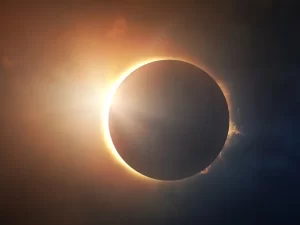
At some point this summer, as the universe decides to reveal it, there will be a less noticeable, but far more salient, event. A supernova will be visible on earth. This once in our lifetime event will mark the dramatic death of a star that exploded 3,000 years ago. However, the light will be reaching us this year. It is stunning to think that looking into the majesty of a clear night sky we are seeing a chronicle of our past. Even the contemporaneous events of today’s eclipse will have happened 8 minutes earlier. If we look closely enough into the stars between the stars we can see back to stars created at the start of time. And as we look up tonight much of what we see is no longer happening. This is all beyond most of our capacities to grasp, so today’s otherwise ordinary event will be interpreted in many ways depending on the diverse capabilities and aspirations of the interpreters. Some will see evidence of a godhead as others see a harbinger of doom. Some will believe it to be a portent for good things and many will devise stories with the opposite conclusion. Is this evidence that we are not alone? Or just a momentary shadow happening in an insignificant corner of the universe? In times before, this was a fearful and awe inspiring moment in the animal annals of our forebears. But today, in these darkening moments, we will partner with the universe. And as cool and rare and special as the eclipse is to those in our part of the world, our interpretations of the eclipse will have more to say about ourselves than anything else. If it’s a message to us, then what of those who live beyond the shadow?
The eclipse is an event born of perspective. The moon is close to us, and so appears large enough to block the sun. It appears meaningful because it is our moon. Yet, as above, so below. And doesn’t this celestial event beautifully depict an ordinary process in everyday life? Buddhists don’t generally speak of heaven or hell. They speak instead of awareness or ignorance. Buddhists talk of “obscurations” to the clarity of understanding. The obscurations that are close to us are meaningful enough to create shadows in our understanding. There is a big wide amazing world that is blocked by this one thing we can’t look past. And because that one thing is close, like the policeman in your rear view mirror, it appears larger than it actually is.
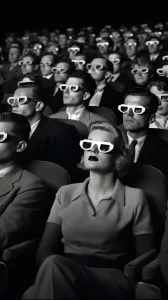 In meditation theory, the sun is used as a depiction of awareness. The sun shines on everything equally regardless of whether it is blocked by the moon, the clouds or the turning earth. Awareness is alive and awake in the universe whether or not we are conscious of it. It is the work of the meditator to uncover the veils of self-imposed obscuration that block access to awareness. We notice thoughts that are actually quite small in the scheme, and bring our attention back to the space afforded by the breath. As we do this, we are stepping back from the thought and revealing a larger context. Our blockage might appear less significant, even humorous. Over time, these obscurations become less solid and less imbued with “meaning”. They become right-sized. Sometimes they disappear altogether. Although the significant obscurations require less force, but more patience. Some will likely return. When that happens we are faced with the same task. Notice them as thinking, and return to the breath. This reconnects us to space, which is perspective. It sucks that we often have to be fooled again and again but that is the work of creating access to awareness. That sunlight will, in time, permeate our experience, but there is a lot of slogging to get there.
In meditation theory, the sun is used as a depiction of awareness. The sun shines on everything equally regardless of whether it is blocked by the moon, the clouds or the turning earth. Awareness is alive and awake in the universe whether or not we are conscious of it. It is the work of the meditator to uncover the veils of self-imposed obscuration that block access to awareness. We notice thoughts that are actually quite small in the scheme, and bring our attention back to the space afforded by the breath. As we do this, we are stepping back from the thought and revealing a larger context. Our blockage might appear less significant, even humorous. Over time, these obscurations become less solid and less imbued with “meaning”. They become right-sized. Sometimes they disappear altogether. Although the significant obscurations require less force, but more patience. Some will likely return. When that happens we are faced with the same task. Notice them as thinking, and return to the breath. This reconnects us to space, which is perspective. It sucks that we often have to be fooled again and again but that is the work of creating access to awareness. That sunlight will, in time, permeate our experience, but there is a lot of slogging to get there.
Many of us are inspired by the idea of space travel. To many kids of my youth, astronauts displaced the firemen and soldiers of my parents’ generation. It was exciting, and to many of us, it still is. But to the astronaut, it was hours and hours of training to get to hours and hours, and maybe years and years, of sitting through endless space. Each step we take is a small step. But, as we are humans, we will likely make a big AF deal of every step. Look at me! I’m coming back to the breath! Huzzah!
In truth, we are training to be ordinary, simple and exactly who we are. And considering our outsized view of ourselves, that is remarkable. In Shambhala Buddhism they call this authentic being. Authentic being connects us to life around us without interpretation. Things are as they are and it is the work of the meditator to see that as it is. But the things that are close appear very large. The vastness of space is threatening to existence, hence the onus on survival as a hunkering down, and closing off into the safety of the cave. In this way, we hunker down in the safety of our minds, returning again and again to the bone we’ll chew. Eventually, we need more than that bone. Humans have held to their families, beliefs, and clans for security. But we have eventually had to venture out, trading security for sustenance. In the coming century the first families could well be born off planet. From some perspective, this is beyond frightening. From another, it is inspiring and exciting. To those who accept the mission it will be a lot of work and routine. Some of us today are building entire fortresses over small flickers of thought. And some are returning to the breath on a journey to enlightenment.
But whether we are journeying through outer space, or the space of our minds, we are partnering with the universe. And, while we are likely not as special as we’d care to believe, we have the possibility of forging a sacred bond with the great unfolding of life. Awareness is our power. And though ego and self-importance provide all the obscurations we think we need, we might develop the power to be released from the “bondage of self” and see through space to the truth beyond.
To the universe, this is a blink of her eye. But for us, it’s a long process. One we travel one breath at a time. All the while followed by our moonshadow, moonshadow.
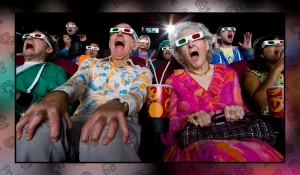



 I tend to live life from one project to the next, believing that -despite all prior experience- this time I will get it right. This diet, this financial plan, this meditation, this love. Especially this love. True Love. That’s the one that gets me. Each love I fall into becomes my center of being. I have always failed to see that my relationship to loving has all the hallmarks of classic addiction. In his masterwork, The Art of Loving, psychologist Erich Fromm defined “true love” as two people who were both ready for the same thing at the same time. He specifically nudged the reader away from the idea that we were part of something special. But, despite the slight-of-hand of hormonal urges, true love is not destiny. True love, like life itself, is a random occurrence that happened to succeed. Life is opportunistic. Einstein famously said, “God doesn’t play dice with the universe”. It seems, even a thinker as profoundly creative as Albert still searched for the occasional guarantee. If the universe doesn’t play dice it may be because dice only has 36 outcomes. The perplexing game of Go that has kept humans intrigued for 4,000 years, has less than 11,000 possible outcomes. If the universe is playing with us, It is using a much more vast and complex system than any game our brains can presently conjure. And, yet, within that ocean of possibility, we find that apple trees always breed apple trees. This interesting paradox is central to our existential being. Life is random and there are repetitive patterns throughout.
I tend to live life from one project to the next, believing that -despite all prior experience- this time I will get it right. This diet, this financial plan, this meditation, this love. Especially this love. True Love. That’s the one that gets me. Each love I fall into becomes my center of being. I have always failed to see that my relationship to loving has all the hallmarks of classic addiction. In his masterwork, The Art of Loving, psychologist Erich Fromm defined “true love” as two people who were both ready for the same thing at the same time. He specifically nudged the reader away from the idea that we were part of something special. But, despite the slight-of-hand of hormonal urges, true love is not destiny. True love, like life itself, is a random occurrence that happened to succeed. Life is opportunistic. Einstein famously said, “God doesn’t play dice with the universe”. It seems, even a thinker as profoundly creative as Albert still searched for the occasional guarantee. If the universe doesn’t play dice it may be because dice only has 36 outcomes. The perplexing game of Go that has kept humans intrigued for 4,000 years, has less than 11,000 possible outcomes. If the universe is playing with us, It is using a much more vast and complex system than any game our brains can presently conjure. And, yet, within that ocean of possibility, we find that apple trees always breed apple trees. This interesting paradox is central to our existential being. Life is random and there are repetitive patterns throughout.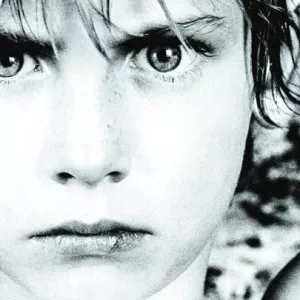 When emotions run high, the fear mind takes over and latches onto simple answers. And naturally, we believe we are right. This feeling of righteousness wants retribution and dismisses the inclusion of societal and familial issues as pandering snowflakery. The Buddha spoke of Karma as the law of cause and effect. He also spoke of the interdependence of every event to all else. Despite conditioned tendencies toward black and white binaries, the Buddha saw that the causes of any event are myriad and nuanced. This would seem frustrating to the raging defensive mind latching onto rightandwrong. But a reactive mind is generally devoid of nuance or compassion. Compassion doesn’t mean kindness to those who’ve caused harm. It means understanding those who cause harm.
When emotions run high, the fear mind takes over and latches onto simple answers. And naturally, we believe we are right. This feeling of righteousness wants retribution and dismisses the inclusion of societal and familial issues as pandering snowflakery. The Buddha spoke of Karma as the law of cause and effect. He also spoke of the interdependence of every event to all else. Despite conditioned tendencies toward black and white binaries, the Buddha saw that the causes of any event are myriad and nuanced. This would seem frustrating to the raging defensive mind latching onto rightandwrong. But a reactive mind is generally devoid of nuance or compassion. Compassion doesn’t mean kindness to those who’ve caused harm. It means understanding those who cause harm.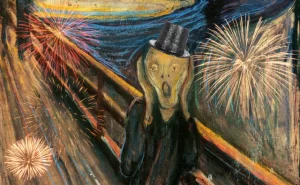 One of the ways we rob ourselves, and reduce our life is by demanding ownership of our experience. And ownership implies controlling the process and the outcome of what we own. But our life is not property. Life is a self-existing dynamic with our past and our world, unfolding naturally as a flower grows and unfolds. Ideally. But, as it is our life, we want what we want to occur in ways we want them to occur. And we want this in our time-frame. Like standing over a flower and yelling at it to grow faster. Or, maybe we are shaming, intimidating or manipulating the flower. Or maybe, more generously, we try coaching the flower to be its best self.
One of the ways we rob ourselves, and reduce our life is by demanding ownership of our experience. And ownership implies controlling the process and the outcome of what we own. But our life is not property. Life is a self-existing dynamic with our past and our world, unfolding naturally as a flower grows and unfolds. Ideally. But, as it is our life, we want what we want to occur in ways we want them to occur. And we want this in our time-frame. Like standing over a flower and yelling at it to grow faster. Or, maybe we are shaming, intimidating or manipulating the flower. Or maybe, more generously, we try coaching the flower to be its best self. Acknowledging how we are actually feeling is an important step in our fresh start. “I’m still feeling guilty”, “I’m still angry”. Felt senses often remain, like a veil over our next moment. Wiping the sleep from our eyes, we sometimes wake in the morning with echoes of our night’s dreaming like a cloak around us. Sometimes we don’t remember the details of the dream, but the feeling remains. Maybe this points to something peculiar in our daily life. The story is often ephemeral, while the feelings are more tangible. This experience is the opposite of our conventional approach where we believe thoughts and ignore our feelings. We attach to our version of events while diminishing or ignoring how we feel. But our version of events relies on thoughts. And thoughts are notoriously unreliable.
Acknowledging how we are actually feeling is an important step in our fresh start. “I’m still feeling guilty”, “I’m still angry”. Felt senses often remain, like a veil over our next moment. Wiping the sleep from our eyes, we sometimes wake in the morning with echoes of our night’s dreaming like a cloak around us. Sometimes we don’t remember the details of the dream, but the feeling remains. Maybe this points to something peculiar in our daily life. The story is often ephemeral, while the feelings are more tangible. This experience is the opposite of our conventional approach where we believe thoughts and ignore our feelings. We attach to our version of events while diminishing or ignoring how we feel. But our version of events relies on thoughts. And thoughts are notoriously unreliable.

 I’m writing on the day set aside to commemorate the life and service of Dr. Martin Luther King, which this year falls on his actual birthdate, Jan 15. To many, it marks a time to reflect on our lives and the contribution to peace, equality and understanding we may be making. It is also a day of remembrance of a fellow human who took on the superhuman task of changing the mind of the world in the face of great opposition.
I’m writing on the day set aside to commemorate the life and service of Dr. Martin Luther King, which this year falls on his actual birthdate, Jan 15. To many, it marks a time to reflect on our lives and the contribution to peace, equality and understanding we may be making. It is also a day of remembrance of a fellow human who took on the superhuman task of changing the mind of the world in the face of great opposition. We have funny glasses and lipstick stains and a raging headache. Even I, who have been clean and sober for several years, are working off a sugar and carb rush from gorging on bad food. Why? To prove I’m happy. Sometimes my life feels like a series of emotional selfies trying to convince myself of something. And so we begin the new year already buried in the past. We have grand resolutions, so inspiring today that we’ll maybe forget them in a week. In my drinking days, I would crumble the life around me, just to see myself build it back. I had a friend who told me I was simultaneously anal expulsive and anal retentive. Clean it up and tear it down. Clean it up and tear it down. And part of this crazy cycle were the outsized resolutions I would make. Inspirations that became obligations, forgotten soon enough that would be resurrected next year. We all wish for world peace.
We have funny glasses and lipstick stains and a raging headache. Even I, who have been clean and sober for several years, are working off a sugar and carb rush from gorging on bad food. Why? To prove I’m happy. Sometimes my life feels like a series of emotional selfies trying to convince myself of something. And so we begin the new year already buried in the past. We have grand resolutions, so inspiring today that we’ll maybe forget them in a week. In my drinking days, I would crumble the life around me, just to see myself build it back. I had a friend who told me I was simultaneously anal expulsive and anal retentive. Clean it up and tear it down. Clean it up and tear it down. And part of this crazy cycle were the outsized resolutions I would make. Inspirations that became obligations, forgotten soon enough that would be resurrected next year. We all wish for world peace. these experiences are very ordinary. Maybe we have glimpses of the truth beyond truth all the time. But maybe we fail to recognize these opening into the profound as we scurry from place to place to place. Our earth evolved uniquely to host conscious life, so it is quite rare and precious. It is our home and the incubator that gave birth to a consciousness that can glimpse itself and the possibility beyond itself. Perhaps, it is through human eyes that the universe sees itself. Perhaps by seeing ourselves, we can see the universe.
these experiences are very ordinary. Maybe we have glimpses of the truth beyond truth all the time. But maybe we fail to recognize these opening into the profound as we scurry from place to place to place. Our earth evolved uniquely to host conscious life, so it is quite rare and precious. It is our home and the incubator that gave birth to a consciousness that can glimpse itself and the possibility beyond itself. Perhaps, it is through human eyes that the universe sees itself. Perhaps by seeing ourselves, we can see the universe.
